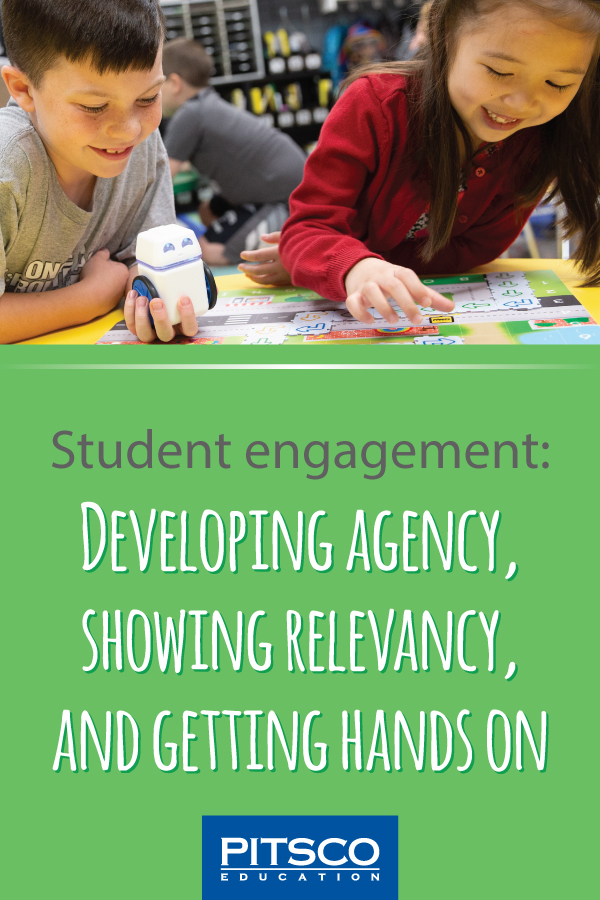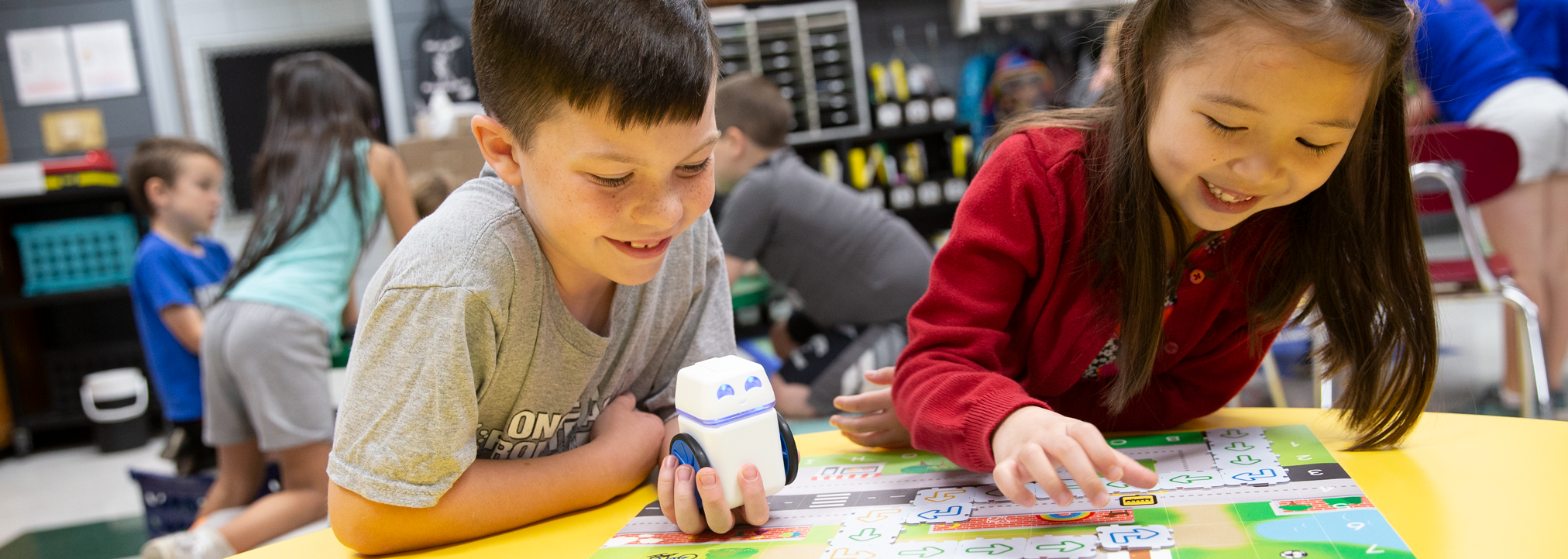At the end of the school day, before a holiday, as the school year wraps, during a subject they don’t enjoy, or sometimes for no specific reason at all, students can find it challenging to stay engaged. But it’s not just your classroom – you’re not alone, Teach. There are endless statistics about student engagement and disengagement. Gallup’s survey efforts of Grades 5-12 showed that almost half of students who responded to the survey are engaged with school (47%), approximately one-fourth aren’t engaged (29%), and the remainder are actively disengaged (24%). Numerous reports also state engagement only decreases as students progress through school.
So, what’s at the root of the statistics? We’ll explore that.
And, how do you combat this? Strategies to come.
Let’s get to it. We hope you find this information useful and actionable.
Before we dive straight into tactics, let’s examine a bit more of the “why” behind student disengagement.
Seven Factors for Disengagement
A book by researcher, academic, and author Eric Jenson shares seven factors that particularly influence student engagement or disengagement and are especially tied to socioeconomic status:
1. Health and nutrition
2. Vocabulary
3. Effort and energy
4. Mind-set
5. Cognitive capacity
6. Relationships
7. Stress level
(The Seven Engagement Factors from Chapter 1)
No one person can tackle all these obstacles, but understanding where the lack of engagement might be coming from can help define the direction you want to take in your classroom.

Beyond Jenson’s list of factors, is students’ ever-fleeting attention span usually a likely culprit? Not so fast . . . According to the BBC, attention spans actually aren’t getting shorter. It seems the attention span of your students is more likely dependent on stimuli, the task at hand, and the expectations students imagine after processing information based on their past experiences. What the individual brings to the classroom and lesson is critical to his or her ability to pay attention and connect with content. Dr. V. K. Maheshwari, PhD, suggests teacher gestures, movements, intensity, and changes in voice volume help keep students’ attention in Instructional Skill of Stimulus Variation.
It’s of note that both the BBC and Dr. Maheshwari allude to relevancy being a key part of attention span and learning.
Agency and Relevancy
Unfortunately, it’s not just these predominately non-school factors that play a part in this issue. There are school, teacher, and systemic factors that also have a stake in engagement. Pitsco Executive Vice President and Chief Strategy Officer Stephan Turnipseed has frequently said that students today are increasingly having education done to them and not done along with them.
Relevancy and agency are at the top of our list as a cause of as well as part of the approach for combating disengagement. We believe students must have an active role in meaningful education experiences.

We’ve heard several definitions of student agency, but they all pretty much boil down to purpose and ownership through choice and voice. With agency, students take not only interest but initiative in their learning. When topics are relevant, students can better provide context and application of an idea, concept, or subject. When presented with opportunities to select their approach or activity for a task or piece of content, students are generally more motivated to explore and complete the work, often beyond what might be required.
Ideas to Encourage (and Sustain) Engagement
Set the stage; set the rules.
Edutopia has several great articles about student engagement. Two articles by contributor Tristan de Frondeville really stuck out to us. Frondeville provides steps and rules that can apply to any grade level. “How to Keep Kids Engaged in Class” covers the explanation of what are, followed by how to implement, 10 fairly practical and easily instituted rules. His other article “Ten Steps to Better Student Engagement” is a bit higher level, focusing on culture and strategies but still in a very tangible way. These two pieces will certainly provide a few actionable takeaways for your class(es).
Lesson plans matter.
The Washington Post article “Five key strategies to get/keep kids engaged in school” shared this quote from Larry Ferlazzo, an accomplished author and teacher, and we couldn’t love it more: “Perhaps we could make a pledge to listen to the interests, hopes, and dreams of our students and work at figuring out ways to make our lessons relevant to them.” He feels that planning and personalization of learning is foundational to engagement.

He believes by getting to know your students’ interests, you can make more personal connections with what you’re covering. Ferlazzo also talks about different types of engagement and teaching the growth mind-set, which along with self-esteem, can better prepare students for their future.
Make learning hands on, minds on.
We’ve been advocates for hands-on learning since we launched in 1971. Our CEO and founder was a student who, more often than not, needed to learn differently. He needed to tinker, doodle, and get hands on with the content. For 50+ years, we’ve filled our catalogs and website with products, materials, curriculum, and more that foster and support hands-on, minds-on learning. One of our more recent additions, KUBO Robotics, targets some of the youngest learners. If we can create an early, even foundational, interest in learning topics like coding and robotics, we believe we might be able to fight against that statistically evident gradual interest decrease that follows students through school.
Specifically, KUBO is a screen-free, simple, and intuitive solution that makes it easy for teachers to introduce computer science and coding to students as young as four years old. Setup happens in just minutes and requires no previous experience. The unique TagTile® programming language is just like a puzzle, which makes it great for a tactile and visual experience. Students practice simple to advanced levels of programming, covering routes, functions, subroutines, and loops. Additionally, KUBO offers a multitude of free activities with maps, cutout costumes, and more. It goes beyond computer science or coding, though, and can be truly used in a cross-curricular manner with art, geography, and literacy components. This can all be found at KUBO.education.

But don’t just take our word for it. Hear from teachers like you.
Educators Jennifer Bozeman and Natalie Vanderbeck have had KUBO in their classrooms for more than a year now. Both have shared their experiences with us.
- If you’re looking to do some personalization of lessons, read about how Vanderbeck believes you can use KUBO to meet the various learner profiles in your classroom.
- If you’re curious about utilizing an inquiry-based approach in your classroom, Vanderbeck shares how hands-on coding helped make that possible.
- If you’re interested in how coding can help students begin developing skills they can use now and in the future, Bozeman has some great insight into KUBO’s role in fostering soft skills and workplace readiness even in kindergarten.
While we know every classroom (and class) is different, engagement matters in each of them. We hope these resources give you inspiration to try something new in hopes of capturing all the attention you can! If you have more to share, please add your thoughts in the comments section to benefit everyone. We love hearing what works for you!
Resources about agency:
“Student Agency”
“10 Tips for Developing Student Agency”
“What is Student Agency?” (DefinedSTEM.com)
”What is student agency?” (InspiredTeaching.org)

TOPICS: IN THE CLASSROOM, Culture, STEM, Social and emotional learning, Future Ready, Hands-on Learning



